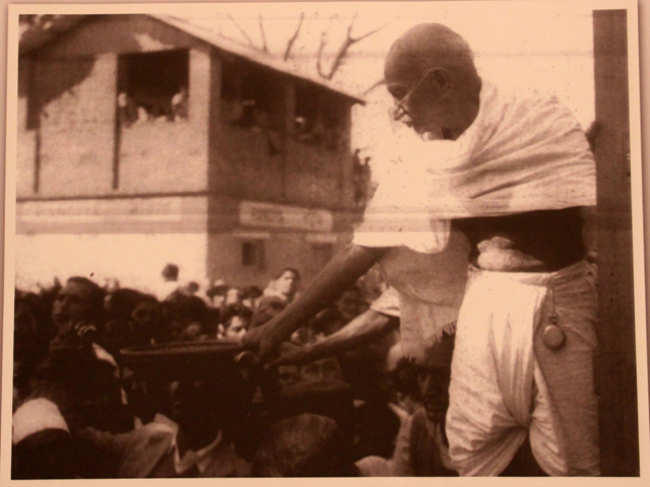 Agencies
AgenciesKamalabai Chandur (Rajamma), Subamma and Gowramma, freedom fighters of the old Mysore State, were the first to contribute all their ornaments. Others followed suit. That morning, almost 90 years ago, the Mahatma managed to raise Rs 90,000 worth of jewellery.
India flagged off a two-year celebration of Mahatma Gandhi’s 150th birth anniversary on Tuesday. The father of the nation visited Bengaluru five times — in 1915, 1920, 1927, 1934 and 1936. This set the ground for Bengaluru to learn lessons in non-discrimination, freedom and interfaith dialogue.
The Mahatma led by example. Be it while preferring to walk instead of taking a chariot from the railway station to his Anand Rao Circle guest house in 1915, addressing a crowd of 40,000 people at the Eidgah Quddus Saheb near the Cantonment in 1920 or during historic meetings in various locations including the Lalbagh Glass House and today’s Government Arts and Science College.
Gandhi, for instance, shared a warm friendship with Sir M Visvesvaraya, who was the Diwan of Mysore from 1912 to 1919. Whenever they disagreed, Sir MV reminded Gandhi that he was older and Gandhi must heed his advice, said Satish Mokshagundam, Visvesvaraya’s grand-nephew.
“While Gandhi was all for rural development, Sir MV promoted industrialisation. The latter advised the Mahatma against prolonging the non-cooperation movement because he felt that it would lead to unionism and more strikes,” he said. “Despite differing viewpoints, they always respected each other.”
While he asked the scientists at the Indian Institute of Science to make discoveries for the poor, the National Dairy Research Institute Southern Regional Centre (formerly Imperial Dairy Farm) preserves a visitor book where Gandhi identified himself as a “farmer from Sabarmati” who will “put into practice what I have learnt in Bangalore.” There, Gandhi had picked up lessons in cattle and dairy farming.
Statewide initiatives conducted on Gandhi’s anniversary indicate that his message remains relevant even today. Artist-activist Heggodu Prasanna, who received the Mahatma Gandhi Seva Award this year, said that it is time to rise above intolerance and put into practice the Gandhian model of economic development.
Read More News on
(Catch all the Business News, Breaking News, Budget 2024 Events and Latest News Updates on The Economic Times.)
Subscribe to The Economic Times Prime and read the ET ePaper online.
Read More News on
(Catch all the Business News, Breaking News, Budget 2024 Events and Latest News Updates on The Economic Times.)
Subscribe to The Economic Times Prime and read the ET ePaper online.












 Get Unlimited Access to The Economic Times
Get Unlimited Access to The Economic Times
